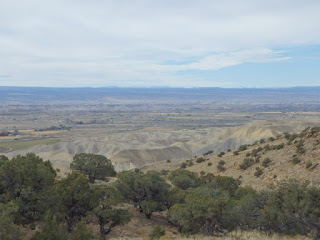The method of dyeing that I decided to go with was to "paint" the roving and yarn with dyes mixed in a yorker bottle. This way I have a little more control over what color goes where when I am using multiple colors at the same time. It also made it very easy to mix colors.
This was all that I need to make a beautiful array of colors for my future yarn: roving, dye, mixing bottles, saran wrap, rubber gloves, a funnel and a rice steamer.
The first step was to protect my workspace with layers of newspaper. The dye splatters easily and I don't want stained counter tops or floors. Over the paper towels, I laid out a fairly long stretch of saran wrap. Then I measured out several 4 oz lengths of roving. My spinning wheel can only hold up to 4 oz at a time so that is why I use that amount. Then I filled a bowl with water and submerged the roving. I let the roving soak for 20-30 minutes while I prepared the different dyes that I wanted to use.
To prepare the dye I heated up some water in my tea pot until it was just boiling. Then I used the funnel to measure out my dyes into the yorker bottles. The amount of dye needed just depends on how dark I wanted the colors to be. Once the dye was in the bottle, I carefully added the hot water to the 4 oz mark on the bottle. Then I topped the bottle off the rest of the way with white vinegar and shook the whole thing to mix it up. There are many different ways that you can use your mordants. Some people soak their roving in the mordants mixed with water. Other people mix them directly with the dye itself. I don't think that it matters all that much which way you do it, as long as you use enough to make the dye stick.
In my first attempt I wanted to make roving with autumn colors, so I choose red, yellow and orange. This was a great combination to work with since orange made a nice gradient of color change between the red and yellow. I layed the wrung out roving on top of the saran wrap and arranged it into one flat layer. Then the dyeing begins. Starting at one end of the roving I squirted the red dye in a zig zag pattern across the width of the layer. Then I squished the dye into the roving to make sure that it was saturating the entire fiber. I followed the red dye with orange, and finally with yellow. Once I was sure that the roving was thoroughly saturated with dye, I covered the entire thing with another layer of saran wrap and rolled it into a tight log. I then placed the rolled up roving into the rice steamer and let it steam for 30 minutes. The heat helps to fix the dye colors to the fiber.
When the roving was done steaming I took it out and let it cool for a few minutes while I prepared the next batch for dyeing. When it was cool enough to handle with the gloves on I unwrapped the roving and rinsed it under the hottest water I could stand. You have to be a little careful when rinsing roving because if you change the temperature too much, you can cause felting which makes the roving unspinnable. Once the rinse water ran clear, I wrung out the roving one last time and then hung it up to dry.
Here are two future skeins of fiery colored yarn! Can't wait for it to dry so I can get to spinning it up!






























